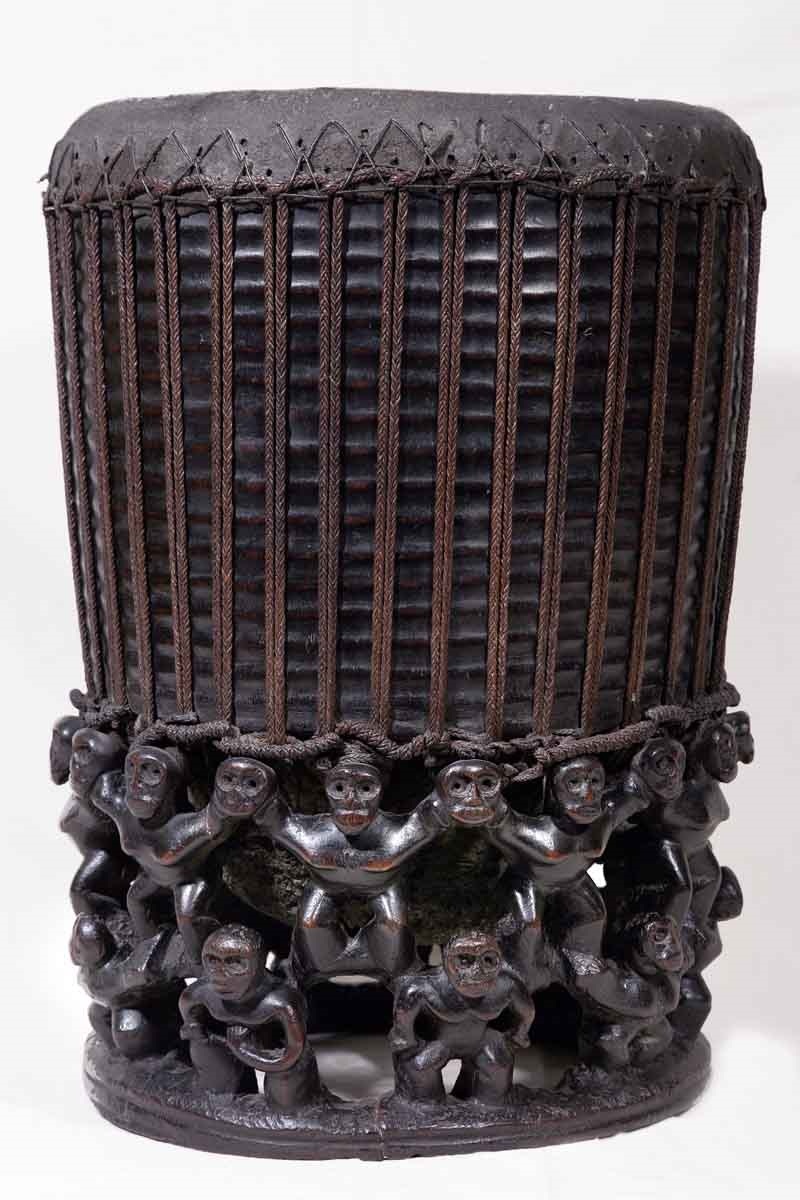Two rows of dancing figures line the base of this late eighteenth century Hawai’ian dance drum, or pahu hula.
Carved from a single piece of the native Hawai’ian hardwood, kou (Cordia subcordata), the drum has a sharkskin drumhead is held in place with coconut (Cocos nucifera) and olonā (Touchardia latifolia) fibre tension cords. Most pahu hula have geometric designs along the base rather than human figures making this an elaborate and rare drum.

The rows of figures have been described as a genealogical metaphor, with successive generations stacked on top of one another. Dancers on the bottom row have their heads bent to the side, as if straining under the weight of the other figures. Their arms are linked in a bent position, echoing the upturned crescent design motifs in other drums. Each dancing figure would have had its eyes inlaid with shell; some of the eyes still have black pegs in the pupils.
This drum would have been used to set the rhythm for hula chants and dances. For Hawai’ians hula is more than just entertainment – it is a sacred experience originally developed as a way to honour the gods.





